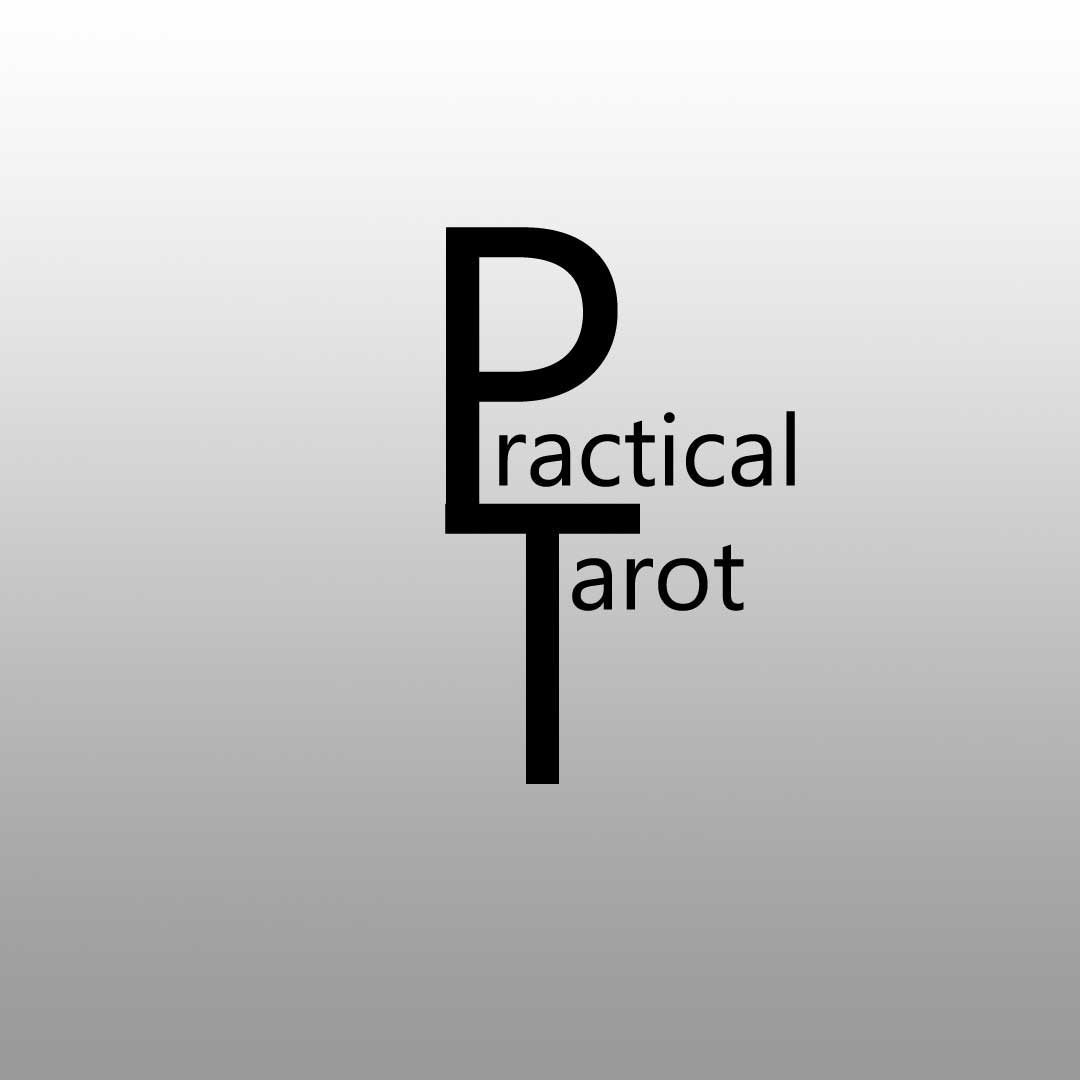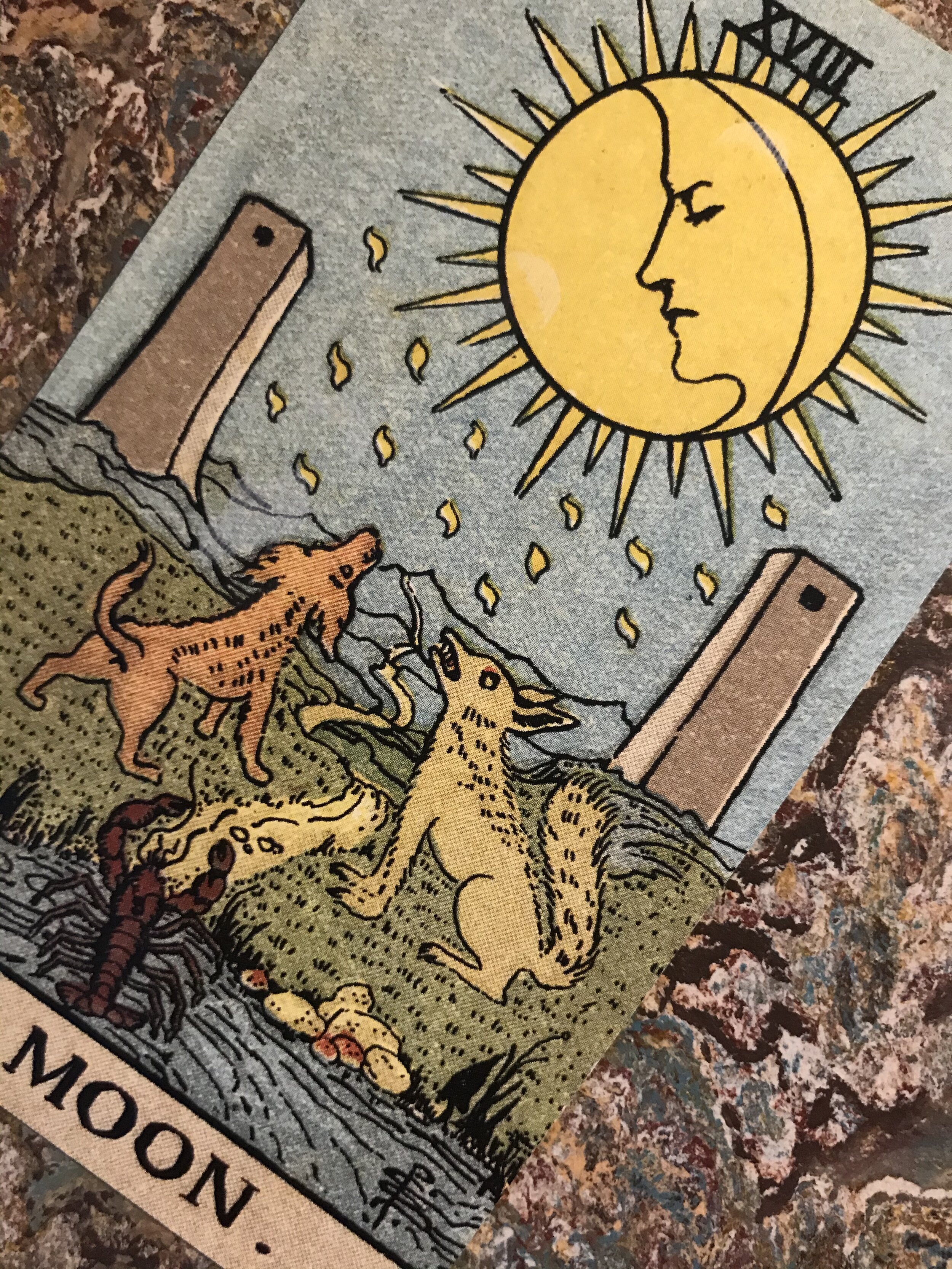thinking and writing around tarot matters
The Fool is the only card in the Major Arcana without a number. His number is zero. There is an enigma, a paradox here: for how can nothing be something? The Fool is a non-person and yet he is here before us striding blithely towards the cliff edge accompanied by his companion dog. Why is he not number 1 in the Major Arcana?
There are many different schools of thought in tarot work, just as there are many branches of psychology, counselling and other talking therapies. Some tarot readers trust their own psychic abilities or their intuition to connect with the cards. Others feel that they have contact with Spirit.
I usually pull one card in the morning for the day ahead and review it in the evening to see how it illuminates my experience of the day. it helps me to reflect on what has been happening, and it often sheds new light on the meaning of the symbols and archetypes for me in my daily life.
A great Tarot reading doesn't have to be mystical, surrounded by crystals, incense and other regalia designed to attract spirits from beyond the veil.
Tarot cards use symbols and archetypes to express ideas in a language that we all recognise. It is the language of myths and fairy tales; of songs and stories; of movies and dramas; of poetry and fable.
Here we see the crawfish with a tough shell protecting its vulnerable underbelly. It is climbing out of the water towards a moonlit path that will take it up the mountain to a higher self.
The Death card can seem scary, even for experienced tarot readers who, when it comes up in a reading, know that many of their sitters will be anxious.
This card speaks of freedom and the joy to be found when we break away from old ideas or what is expected of us and embrace all possibilities. It tells us that finding ourselves and celebrating who we are and what we have achieved with family and friends is a way to fulfilment.
When people feel that society makes collective decisions that disregard the unique needs of the individual, their feelings of alienation are compounded by illness, poverty, isolation.
Are you wondering what quantum mechanics could possibly have to do with tarot? You are probably not alone. And frankly most people (including tarot readers) would not even be interested. Feel free to skip this blog post. However, if like me you are always curious about the ways of the universe and look for explanations, not least for the astounding results of a tarot reading, I think Heisenberg had it down.
Pentacles are of the element Earth. They are the manifestation into the material world of our hopes, fears, dreams, and desires. They are the world of our senses; our bodies and the spaces we inhabit.
The Chariot can be a difficult card to interpret. At number 7 in the Major Arcana, it follows The Lovers which is a time when we learned to make our own decisions and chose to leave our childhood behind to step out into the world as individuals. How do we leave the love and security of our family, the community that has nurtured us, to begin this journey of self-discovery?
The 22 cards of the traditional Major Arcana are the symbolic story of The Hero or Heroine as they take the journey of self-discovery from birth to full realization of who they are and their place in the world. It is a story as old as humankind, repeated in tales from ancient Sufi texts, the Hindu Vedas, Buddhist stories, ancient Greek, Roman and Norse legends and countless oral traditions from The Old Testament to Native American songs handed down through generations to explain the world and how to live our best lives.
The dreamy, imaginary, watery world of the 7 of Cups reflects the power of our fantasies to take us away from the real world. Imagination is a wonderful gift but sometimes it can carry us away. Here we see a lost soul – the figure is a black silhouette – caught up in their daydreams and confused about what they think will make them genuinely happy. This card reminds me of a young contestant being interviewed on a music talent show who, when asked what she wanted from the competition replied, “I just want to be famous.”
The Hanged Man is one of the 3 cards at the centre of the 22 cards of the Major Arcana. The Wheel of Fortune 10, Justice 11, and The Hanged Man 12 – they all represent the mid-point in our journey from ‘birth’ (in the physical sense, of our spiritual growth, and of our personal development) towards what Jung called ‘self-actualisation’ or becoming whole or fulfilled.
The Threes in Tarot, overseen by The Empress, the archetype of our deepest human experience of love and creativity, are expressions of the feminine principle of the perceptive and transformational power of love. The Empress is Yin, the receptive, the womb through which all Souls must pass. Here in the Three of Wands we see The Empress expressed through feelings, our drive, our passions about ourselves and our world.
The Threes in tarot are overseen by The Empress who represents our deepest human experiences. She is our Soul manifested in the physical world from birth, through growth and decay to death and then rebirth. She is vitality and constant renewal.
Judgement came up at the end of the reading. It occupied no space or placement. It was just there, and it loomed over the rest of the cards. It felt important and we contemplated it for a while.
Asking the right question seems simple doesn’t it? But most of us very soon realise that it can be surprisingly hard - and it matters.
There's no getting away from it, the lack of diversity in the older tarot decks including the most commonly used Rider Waite and Thoth decks can be an issue for many people - understandably.
It's been said many times but it really is the best way to learn how the cards relate to daily life: pulling a daily card is one of the best exercises in learning the language of tarot.






















Sometimes, finding the right question is incredibly difficult. Some people might be confused or upset or just unhappy. Or perhaps none of those things but just plain curious about how the direction in which their life is going or taking them.